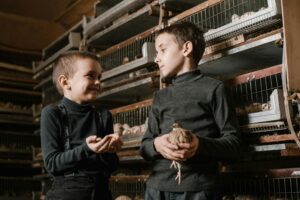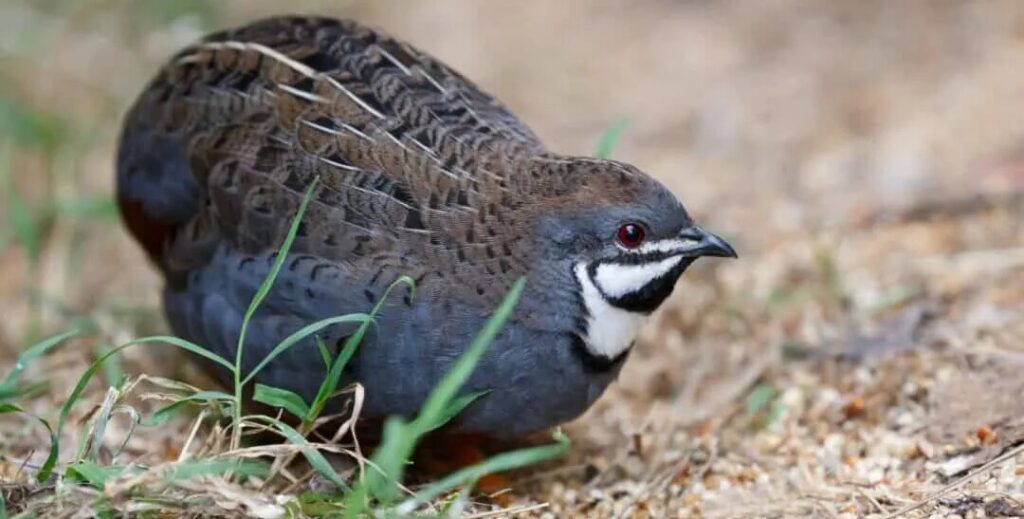Are you searching for a small, intriguing, and delightful pet bird to add to your family? Look no further than the charming button quail. These tiny birds are gaining popularity among pet enthusiasts and bird lovers alike due to their compact size, unique behaviors, and relatively low-maintenance care requirements. In this blog post, we’ll explore everything there is to know about button quails, from their natural habitat and appearance to their personalities and how to care for them.
What is a Button Quail?
Button quails, scientifically known as Turnix spp., are a captivating group of small birds native to various parts of Asia, Australia, and Africa. Despite their name, button quails are not true quails but belong to a separate family known as Turnicidae. These birds are often confused with other quail species, such as the coturnix quail, due to their similar appearance and size.
Unlike their larger quail relatives, button quails are ground-dwelling birds that prefer to stay low to the ground, where they forage for food and shelter. In their natural habitat, they thrive in grasslands, shrublands, and open woodlands, where they can easily camouflage themselves from predators.
While many quail species are known for their social behaviors, button quails have a more solitary nature, often forming monogamous pairs during the breeding season. Their distinct habits and behaviors make them a fascinating choice for bird enthusiasts looking to add a unique pet to their collection.
Button Quail Appearance
Button quails are known for their small size and adorable appearance. These birds typically measure around 4 to 5 inches in length and weigh just 1 to 2 ounces. Their compact bodies are covered in colorful plumage, with common color variations including shades of brown, white, cinnamon, and even blue.
One of the most distinguishing features of button quails is their small, round bodies and short tails, which give them a distinctive and endearing look. Their short legs and beaks are perfectly adapted for their ground-dwelling lifestyle, allowing them to move quickly and efficiently as they forage for food.
Despite their small size, button quails have a remarkable presence, with their vibrant colors and playful antics captivating the hearts of bird lovers everywhere.
Button Quail Behavior and Personality
Button quails are known for their active and curious nature, making them entertaining pets for bird enthusiasts. These birds are constantly on the move, exploring their surroundings, foraging for food, and engaging in playful behaviors that showcase their inquisitive personalities.
Although button quails are generally solitary birds, they can display social behaviors when housed together. They may form small groups or pairs, especially during the breeding season. While they are not typically considered noisy birds, they do produce a range of vocalizations, including soft coos and chirps, to communicate with one another.
Button quails are also known for their unique flight and foraging habits. Unlike many other bird species, they prefer to stay close to the ground, using their short wings to make quick, low flights. This behavior is often observed when they feel threatened or startled, as they attempt to escape potential predators.
Button Quail Care

Caring for button quails is relatively straightforward, making them an excellent choice for bird lovers seeking a low-maintenance pet. When it comes to housing, it’s essential to provide a safe and comfortable environment for your button quails. An ideal cage should be spacious enough to allow for movement, with a secure top to prevent escape. A shallow aviary or large cage with plenty of hiding spots and soft nesting materials is recommended.
Button quails have specific dietary needs that must be met to ensure their health and well-being. Their diet should consist of a mix of seeds, greens, and insects, providing a balanced and varied diet to keep them healthy and active. Freshwater should always be available, and you may consider offering nutritional supplements and treats to enhance their diet.
Grooming is another important aspect of button quail care. These birds require regular feather care and may enjoy bathing in shallow water to keep their plumage clean and healthy. Monitoring their health and wellness is crucial, as button quails are prone to certain health issues, such as mites and respiratory problems. Being vigilant and knowing the signs of illness can help you take prompt action to address any concerns.
Button Quail Breeding
Button quails are known for their interesting breeding habits and can be a rewarding species to breed in captivity. To successfully breed button quails, it’s essential to create a suitable environment that mimics their natural habitat. Providing a comfortable nesting area with appropriate materials is crucial for encouraging successful breeding.
The breeding process begins with the formation of a monogamous pair, which will work together to build a nest and care for their eggs. Once the eggs are laid, they will require incubation, which lasts approximately 16 to 18 days. During this time, it’s important to maintain optimal conditions, such as temperature and humidity, to ensure the successful development of the chicks.
Once the chicks hatch, they will need attentive care and supervision. Providing a safe and nurturing environment, along with proper nutrition, will help the chicks grow and develop into healthy adult button quails.
Button Quail as Pets
Button quails have gained popularity as pets due to their small size and relatively low-maintenance care requirements. There are numerous pros to keeping button quails as pets, including their compact size, adorable appearance, and engaging behaviors. These birds are also less demanding than larger pet birds and can provide hours of entertainment with their playful antics.
However, there are also challenges to consider when keeping button quails as pets. While they are generally low-maintenance, button quails do require company and may become stressed if kept alone for extended periods. Additionally, they are not typically cuddly pets and may not enjoy being handled frequently.
Despite these challenges, button quails can be suitable pets for beginners, provided the owner is willing to invest time and effort into understanding their needs and providing a suitable environment. Bonding with button quails may take time and patience, but with consistency and care, it’s possible to build a rewarding relationship with these charming birds.
Button Quail Diet
A balanced and nutritious diet is essential for maintaining the health and well-being of button quails. Their diet should consist of a variety of seeds, greens, and insects, providing the necessary nutrients to support their active lifestyle. Seeds, such as millet and canary seed, are staple foods, while fresh greens like spinach and kale offer additional vitamins and minerals.
Insects, such as mealworms and small crickets, can be offered as occasional treats to mimic their natural foraging habits. It’s important to provide fresh water daily, ensuring that your button quails stay hydrated.
To support their dietary needs, you may also consider offering nutritional supplements and treats, which can help ensure they receive all the essential nutrients for optimal health.
Button Quail’s Lifespan and Care
Button quails have an average lifespan of 3 to 5 years, although with proper care, they can live longer. Maintaining a healthy and happy quail throughout its life requires attentive care and monitoring, ensuring that their physical and mental needs are met.
Regular care includes providing a balanced diet, a clean and safe enclosure, and opportunities for social interaction and enrichment. Monitoring their health and well-being is crucial, as early detection of potential health issues can help prevent more serious problems down the line.
By maintaining a consistent care routine and being attentive to their needs, you can ensure that your button quails live a fulfilling and healthy life.

